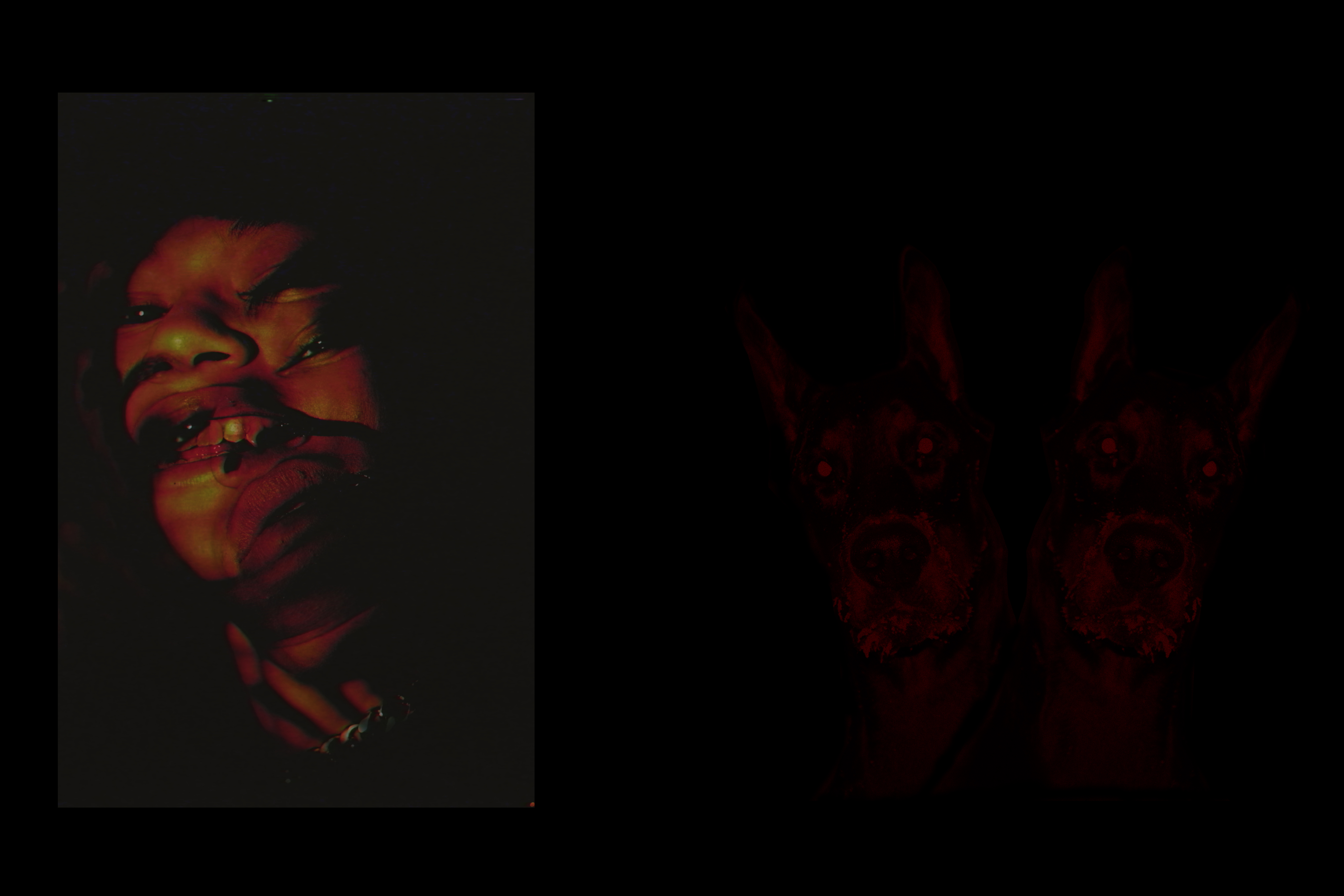Suffering from frequent nosebleeds, photographer, filmmaker and collage artist Giancarlo LaGuerta’s, blood from his nose would sometimes come gushing out during his sleep. “This meant that I would choke on the blood sometimes before being jolted from my dreams.” The first few times the blood came gushing from his nostrils his mother was alarmed as the flow was heavy, “it would sometimes take half an hour to stop the bleeding, which felt like hours.”
The bleeding would sometimes interfere with my dreams in some kind of way if I didn’t wake up as soon as it started. My dreams, which were “colourful” enough as they were (I was a child), would often take a dark turn in the last few moments before I woke up and I think that is sort of what I was trying to reimagine with this project.

Canary yellow letters stand bold on a soot black background reminding me of Goosebumps cover art. But what takes centre stage is what is depicted below the eerie lettering. A face photo-shopped and placed upside down on a neck reminiscent of a Frankensteinesque body. The blood vessels nestled tightly under the skin appear to be climbing out to the surface and illuminating the skin in a red glow. And that’s when nudity steps in–fitting into this tale of horror by location–Botswana, a country that is known for its conservativism. The photo story provokes these conservative notions with the horror of unashamed self-expression. Making use of positive film images results in ghostly near demonic silhouettes. Arms raised in a ritualistic manner. Is this body of work then a commentary not only on conservative notions but the representation of black bodies in mainstream horror?
The tropes used in representing black people in mainstream cinema cannot be divorced from their representation in mainstream horror. As paraphrased from Kemi Alemoru, they oftentimes play the role of the sassy sidekick. This can be seen in characters such as Jada Pinkett Smith’s portrayal in Scream 2. Here her character embodies personality expressions such as being obnoxious and loud. Her death even becoming comical. The reverse of this is a lack of character development due to dying early on or only serving the purpose of aiding the white protagonist. As stated by Alemoru Spike Lee came up with the term ‘Magical Negro’ to place emphasis on the trope of the black spiritualist as a plot devise of complicity. Stanley Kubrick’s The Shining acts as an example. Dick Hallorann in this “cinematic horror classic” uses his special supernatural powers to bail out the little white kid Danny (the protagonist Jack’s son). And what does Dick get in return for saving Danny you might ask? Well, he is dismissed as a “nigger cook” and not only that, Jack later on axes him to death (one of the first characters to die in the film). Black bodies are decentralised and if ever centralised they are made out to be violent (men), promiscuous (women) or demonised. These tropes play out no differently in mainstream horror and an issue is of course that what we consume on-screen infiltrates into the subconscious actively perpetuating negative stereotypes towards certain bodies. With Bleeding in the Dark Giancarlo and his team actively subvert not only gender expression and freedom of self-expression but the representation of black people in mainstream horror.
Credits:
Photographer, Art Director, Post Production & Stylist: Giancarlo LaGuerta
Models, Hair & Make-up: Leloba Jefferis & Sethunya Neo Radithoko
Stylist: Eva Maria Fernanda LaGuerta





























































